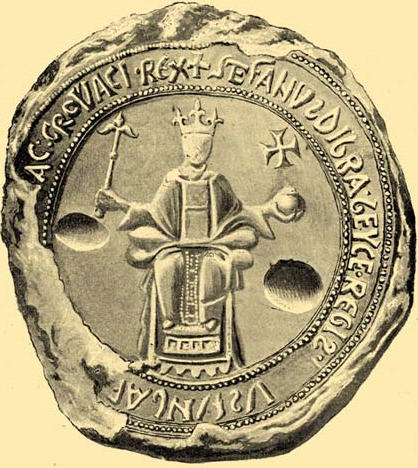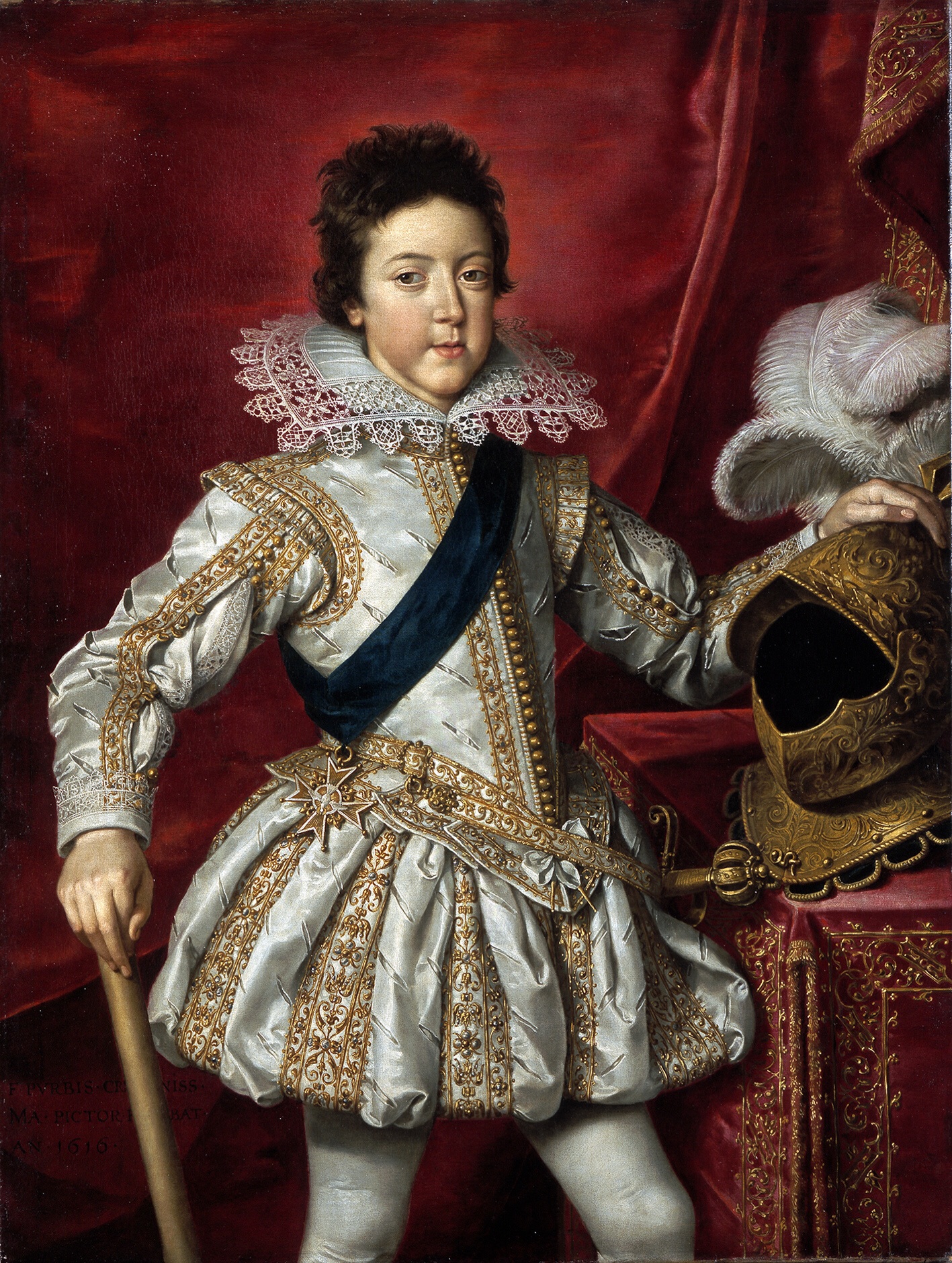|
Tescelin De Fontaine
Tescelin le Roux ( – 11 April 1117), or Tescelin de Fontaine, Tescelin le Saur, Tescelin Sorus, was a Burgundian knight, keeper of a castle on the road from Paris to Dijon, and father of Saint Bernard of Clairvaux. His castle, which had been largely destroyed, was rebuilt in the 19th century and is now a pilgrimage destination for followers of Saint Bernard. Family Tescelin le Roux was born about 1070, son of Tescelin (), a knight of the lord of Châtillon and Saruc de Grancey. The sketchy available evidence indicates that Tescelin senior was a ''miles castri'', a dependent knight unrelated to his lord. Alberic of Trois-Fontaines wrote in the 13th century that Tescelin's mother married Fulk, lord of Aigremont, as well as Tescelin's father. She had a son named Gui by Fulk, Tescelin is described as having a reddish complexion, almost yellow-haired, commonly known as Sorus, or Le Roux. William of St-Thierry said he was "a man of large possessions, gentle in manners, a great lov ... [...More Info...] [...Related Items...] OR: [Wikipedia] [Google] [Baidu] |
Mariawald Abbey
Mariawald Abbey () was a monastery of the Trappists (formally known as the Cistercians of the Strict Observance), located above the village of Heimbach, in the district of Düren in the Eifel, in the forests around Kermeter, North Rhine-Westphalia, Germany.Trappist Info , a Trappist directory; p. 26. Accessed online 4 December 2006. In September 2018, the last remaining monks left Mariawald Abbey and the monastery is currently up for sale. History Cistercians Following Heinrich Fluitter's vision of the , a shrine and chapel were built ...[...More Info...] [...Related Items...] OR: [Wikipedia] [Google] [Baidu] |
Hugues De Chatillon
Hugh I, Count of Blois, also known as ''Hugh I of Châtillon'' ( – 9 April 1248)Theodore Evergates, ''The Aristocracy in the County of Champagne, 1100-1300'', (University of Pennsylvania Press, 2007), 223. was jure uxoris Count of Blois from 1230 to 1241, and Count of Saint Pol (as Hugh V) from 1226 to 1248. Hugh was son of Gaucher III of Châtillon and Elisabeth, daughter of Hugo IV, Count of Saint-Pol. He married Agnes of Bar-le-Duc, daughter of Thibaut I of Bar-le-Duc and Hermesend of Bar-sur-Seine, in 1216. By 1225, Agnes was dead and Hugh married Marie. In 1226, Hugh married Marie of Avesnes, daughter of Walter II of Avesnes and Margaret of Blois. They had 5 children: # John I (d. 1280), Count of BloisTheodore Evergates, ''The Aristocracy in the County of Champagne, 1100-1300'', 254. # Guy III (d. 1289), Count of Saint Pol # Gaucher IV (d. 1261), lord of Chatillon, Crécy and Crèvecœur. His son was: Gaucher V de Châtillon. # Hugh (d. 1255) # Basile (d. 1280), bec ... [...More Info...] [...Related Items...] OR: [Wikipedia] [Google] [Baidu] |
1117 Deaths
Year 1117 ( MCXVII) was a common year starting on Monday of the Julian calendar. Events By place Europe * January 3 – 1117 Verona earthquake. The earthquake is rated at VII (''Very strong'') on the Mercalli intensity scale, and strikes northern Italy and Germany. The epicentre of the first shock is near Verona, the city which suffers the most damage. The outer wall of the amphitheatre is partially felled, and the standing portion is damaged in a later earthquake of 1183. Many other churches, monasteries, and ancient monuments are destroyed or seriously damaged, eliminating much of Verona's early medieval architecture and providing space for a massive Romanesque rebuilding. * King Stephen II of Hungary regains Dalmatia from the Republic of Venice while the Venetians are on a naval expedition. Doge Ordelafo Faliero dies in battle (near Zadar) against the Hungarians. Faliero is succeeded by Domenico Michiel, who reconquers more territory and agrees to a 5-year tru ... [...More Info...] [...Related Items...] OR: [Wikipedia] [Google] [Baidu] |
1070s Births
1 (one, unit, unity) is a number, numeral, and glyph. It is the first and smallest positive integer of the infinite sequence of natural numbers. This fundamental property has led to its unique uses in other fields, ranging from science to sports, where it commonly denotes the first, leading, or top thing in a group. 1 is the unit of counting or measurement, a determiner for singular nouns, and a gender-neutral pronoun. Historically, the representation of 1 evolved from ancient Sumerian and Babylonian symbols to the modern Arabic numeral. In mathematics, 1 is the multiplicative identity, meaning that any number multiplied by 1 equals the same number. 1 is by convention not considered a prime number. In digital technology, 1 represents the "on" state in binary code, the foundation of computing. Philosophically, 1 symbolizes the ultimate reality or source of existence in various traditions. In mathematics The number 1 is the first natural number after 0. Each natural number, ... [...More Info...] [...Related Items...] OR: [Wikipedia] [Google] [Baidu] |
Congregation Of The Feuillants
The Feuillants were a Catholic congregation originating in the 1570s as a reform group within the Cistercians in its namesake Les Feuillants Abbey in France, which declared itself an independent order. In 1630 it separated into a French branch (the Congregation of Our Lady of the Feuillants) and an Italian branch (the Reformed Bernardines or ''Bernardoni''). The French order was suppressed in 1791 during the French Revolution, but gave its name to the Club des Feuillants. The Italian order later rejoined the Cistercians. History Les Feuillants Abbey, the Cistercian abbey near Toulouse (Haute-Garonne) from which the order took its name, was founded in 1145. It passed into the hands of commendatory abbots in 1493, and in that way came in 1562 to Jean de la Barrière (1544-1600). After his nomination he went to Paris to continue his studies, and then began his lifelong friendship with Arnaud d'Ossat, later cardinal. In 1573 Barrière, having decided to introduce a reform into h ... [...More Info...] [...Related Items...] OR: [Wikipedia] [Google] [Baidu] |
Louis XIII Of France
Louis XIII (; sometimes called the Just; 27 September 1601 – 14 May 1643) was King of France from 1610 until his death in 1643 and King of Navarre (as Louis II) from 1610 to 1620, when the crown of Navarre was merged with the French crown. Shortly before his ninth birthday, Louis became king of France and Navarre after his father Henry IV of France, Henry IV was assassinated. His mother, Marie de' Medici, acted as regent during his minority. Mismanagement of the kingdom and ceaseless political intrigues by Marie and her Italian favourites led the young king to take power in 1617 by exiling his mother and executing her followers, including Concino Concini, the most influential Italian at the French court. Louis XIII, taciturn and suspicious, relied heavily on his chief ministers, first Charles d'Albert, duc de Luynes and then Cardinal Richelieu, to govern the Kingdom of France. The King and the Cardinal are remembered for establishing the ''Académie française'', and ending ... [...More Info...] [...Related Items...] OR: [Wikipedia] [Google] [Baidu] |
Couvent Et Basilique Saint-Bernard
The Couvent et Basilique Saint-Bernard (Saint Bernard's Convent and Basilica) is a group of buildings in Fontaine-lès-Dijon, France, including a convent, basilica and church set in a public park. The complex contains the birthplace of Saint Bernard of Clairvaux (1090–1153), the main reformer of the Cistercians. The present buildings date no further back than the Late Middle Ages, and have been greatly modified since then, with a major renovation in the late 19th century. Location The Couvent et Basilique Saint-Bernard is in Fontaine-lès-Dijon, Côte-d'Or, Burgundy, France. It is dedicated to Saint Bernard of Clairvaux, who was born there. The two buildings are at the top of the Butte de Fontaine, a small hill overlooking the town of Dijon and the surrounding countryside. The buildings today are surrounded by a park crisscrossed by pedestrian paths, some leading through the woods. At one time there was a monument to the dead of World War I and World War II, but this has been ... [...More Info...] [...Related Items...] OR: [Wikipedia] [Google] [Baidu] |
Abbey Of St
An abbey is a type of monastery used by members of a religious order under the governance of an abbot or abbess. Abbeys provide a complex of buildings and land for religious activities, work, and housing of Christian monks and nuns. The concept of the abbey has developed over many centuries from the early monastic ways of religious men and women where they would live isolated from the lay community about them. Religious life in an abbey may be monastic. An abbey may be the home of an enclosed religious order or may be open to visitors. The layout of the church and associated buildings of an abbey often follows a set plan determined by the founding religious order. Abbeys are often self-sufficient while using any abundance of produce or skill to provide care to the poor and needy, refuge to the persecuted, or education to the young. Some abbeys offer accommodation to people who are seeking spiritual retreat. There are many famous abbeys across the Mediterranean Basin and ... [...More Info...] [...Related Items...] OR: [Wikipedia] [Google] [Baidu] |
Molesme Abbey
Molesme Abbey was a well-known Rule of St. Benedict, Benedictine monastery in Molesme, in Laignes, Côte-d'Or, Duchy of Burgundy, on the border of the Diocese of Langres, Dioceses of Langres and Diocese of Troyes, Troyes. History Molesme Abbey was founded in 1075 by Robert of Molesme, Robert, a former prior of the Abbey of Montier-la-Celle near Troyes. In 1070 he was appointed abbot of the Abbey of Saint-Michel in Tonnerre, Yonne, Tonnerre, which had become lax in observance of the Rule of Saint Benedict, Benedictine Rule. He found the monks reluctant to adopt any reforms and returned to Montier-la-Celle. At about this time, he consented to repeated requests from a group of hermits to lead them in founding a new community of austerity of life. They settled in 1075 on a piece of land on a hillside by the River Laigne, in the present Molesme, not far from what once was the site of the Gallo-Roman settlement of Vertillum. The land had been given to Abbot Robert by Hugo de Norlennac ... [...More Info...] [...Related Items...] OR: [Wikipedia] [Google] [Baidu] |
Pouilly, Moselle
Pouilly (; ) is a commune in the Moselle department in Grand Est in north-eastern France. See also * Communes of the Moselle department The following is a list of the 725 communes of the Moselle department of France France, officially the French Republic, is a country located primarily in Western Europe. Overseas France, Its overseas regions and territories include Frenc ... References External links * Communes of Moselle (department) {{Metz-geo-stub ... [...More Info...] [...Related Items...] OR: [Wikipedia] [Google] [Baidu] |
Church Of Saint-Bénigne De Dijon
Church may refer to: Religion * Church (building), a place/building for Christian religious activities and praying * Church (congregation), a local congregation of a Christian denomination * Church service, a formalized period of Christian communal worship * Christian denomination, a Christian organization with distinct doctrine and practice * Christian Church, either the collective body of all Christian believers, or early Christianity Places United Kingdom * Church, a former electoral ward of Kensington and Chelsea London Borough Council that existed from 1964 to 2002 * Church (Liverpool ward), a Liverpool City Council ward * Church (Reading ward), a Reading Borough Council ward * Church (Sefton ward), a Metropolitan Borough of Sefton ward * Church, Lancashire, England United States * Church, Iowa, an unincorporated community * Church Lake, a lake in Minnesota * Church, Michigan, ghost town Arts, entertainment, and media * '' Church magazine'', a pastoral theology magazin ... [...More Info...] [...Related Items...] OR: [Wikipedia] [Google] [Baidu] |



